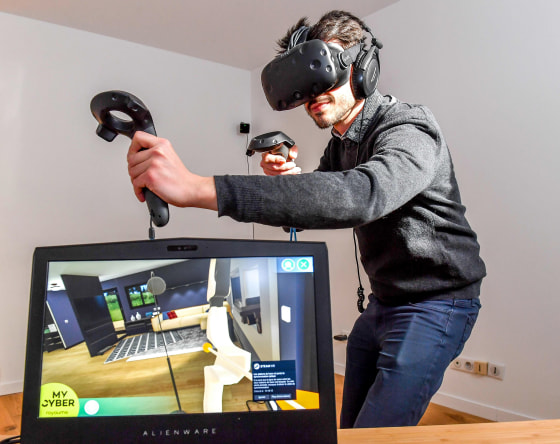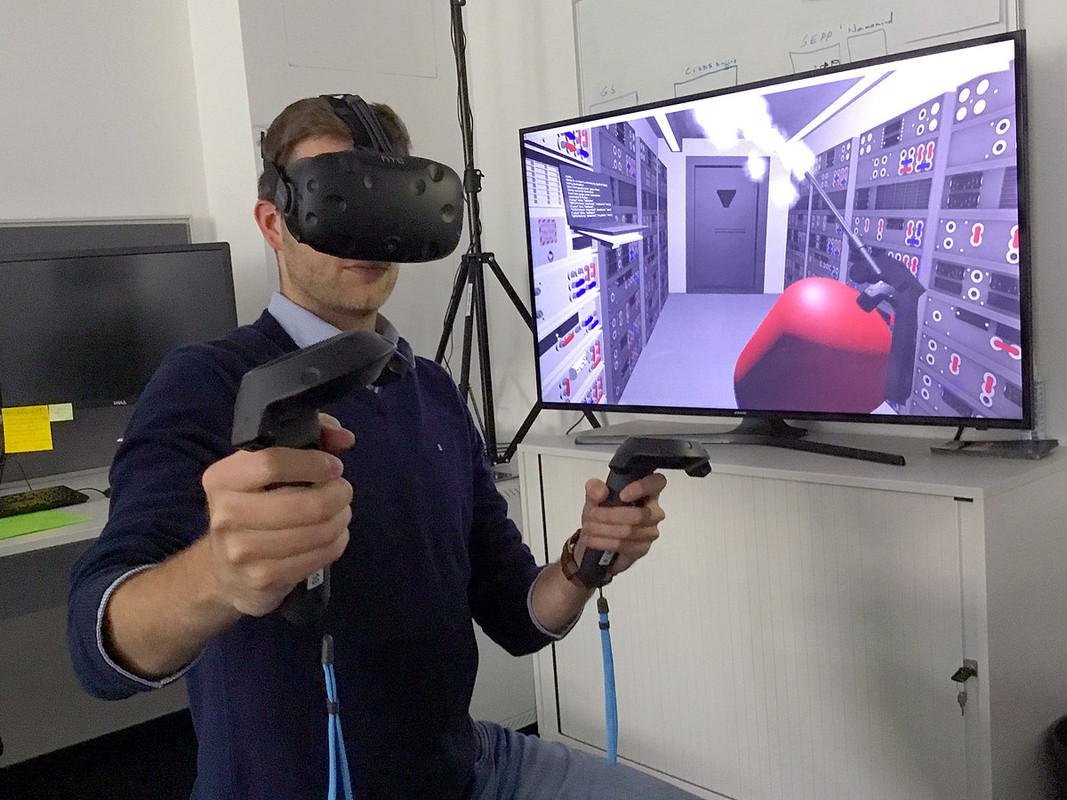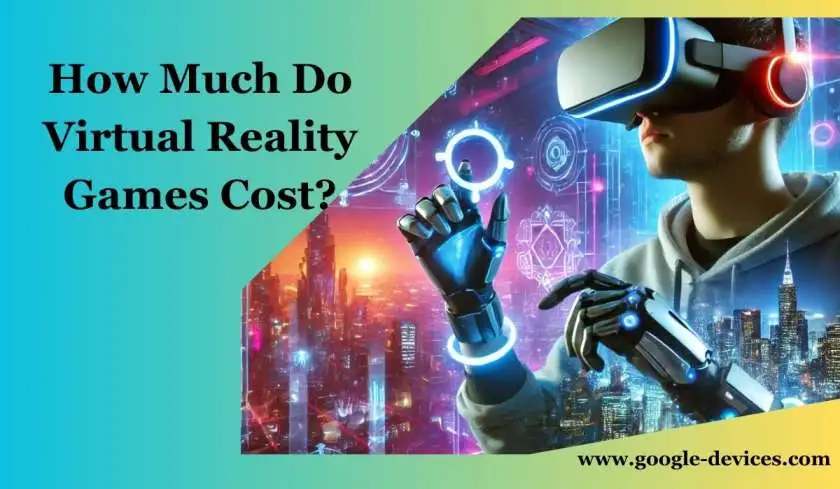How Much Do Virtual Reality Games Cost? Virtual reality (VR), which offers fully immersive experiences that were previously only found in science fiction, is quickly changing the gaming industry. Since VR gaming is becoming more and more popular, many companies and developers are interested in how much it costs to make a VR game. Let's examine the many determinants of the price and give a thorough analysis.
Virtual reality (VR) didn't gain traction until the early 2010s, despite its appearance decades earlier. As of right now, the technology is developing more quickly than any other platform on the market, making it one of the most fascinating gaming frontiers.
For those who are unfamiliar, virtual reality (VR) is a technology that uses a head-mounted display to immerse people in computer-simulated 3D settings. Players are free to move around, explore, and interact with the items in the virtual world.
How Much Do Virtual Reality Games Cost?

Both casual and die-hard gamers have embraced this technology, and experts predict that by 2027, the global VR business will be worth over $60 billion. In light of this, a lot of developers are thinking about switching to creating VR games, but how much does a VR game actually cost? In this post, we'll outline the five primary aspects that will impact a VR game's overall cost and provide you with some approximate development costs.
What Is the Price of a VR Game?
It is practically impossible to assign a specific value to the overall cost of a virtual reality video game. When evaluating its entire cost, there are far too many aspects to take into account, as you shall discover later in the text. Nevertheless, virtual reality games are still games, and some approximate numbers can be provided.
Read Also: How the Virtual Reality Lucid Dream Pillow Transforms Sleep Experiences?
For instance, depending on their complexity, fully functional small VR games could cost anywhere from $5,000 to $10,000, or even less if they're easy to make. The typical game, on the other hand, will cost creators between $20,000 and $100,000 and will typically be more intricate, feature deeper mechanics, and be more polished. In this blog, want to know how to uninstall guide virtual reality transforms interior design?
The largest and most intricate VR games, particularly ones with online multiplayer capabilities, can easily cost over a million dollars. For example, Robo Recall only cost about $3.8 million to build, according to online estimates.
How Much Does Preparatory Work on a VR Game Cost?
The initial stages of developing a virtual reality game are not only the start; they are the furnace in which the whole experience is created. At this point, the core of the game starts to take shape. Concept art develops, narratives emerge, characters are brought to life, and the core ways in which players engage with the environment are established.
This first phase is a lovely dance of cooperation. The project's DNA is brought to life by the brilliance of the writers, painters, and designers. While narratives pique the imagination, concept art sets the visual tone. Behind the scenes, developers are working nonstop to build the fundamental elements that will form the game's framework.

It is impossible to overestimate the importance of this early stage. The entire VR experience is determined by every choice made here. Through a painstaking process, the creative spark is turned into concrete building blocks.
Such as the main gameplay loops, character designs, and narrative beats. The distinctive skills of a team really come through in this cooperative endeavor. Every participant is essential, from engineers creating the framework for interaction to artists establishing the aesthetic.
However, there are other fires blazing in this early period than the creative spark. The price of making a virtual reality game a reality is also a crucial factor in this case.
The project's scope—how intricate the mechanics, how deep the plot, and how gorgeous the visuals become—is greatly influenced by these early choices. As a result, the cost of developing VR becomes a guiding concept that keeps the project on course both financially and creatively.
Related Post: What if You Gave a Caveman a VR Headset?
The complex process of turning an idea into a playable virtual reality experience necessitates careful preparation and collaboration. From the realistic settings to the responsive gaming components, virtual reality (VR) in particular thrives on detail.
The cost of developing VR games is therefore an important consideration that must be made right away. This encompasses not just the creative magic created by authors, illustrators, and designers, but also the technical know-how of developers who build the game's sturdy base.
The team's focus changes as the project moves from the conceptual stage to more tangible development phases. The developers take the lead, perfecting the fundamental mechanics and integrating them with the preexisting story and graphics.
Naturally, this wider variety of tasks is included in the development cost, which includes not only producing an engrossing narrative and breathtaking graphics but also making sure the entire VR experience runs smoothly.
Key Elements That Affect a VR Game’s Development Costs
As previously said, there are numerous factors that can affect the cost of developing your game. While by no means comprehensive, this list encompasses the most important ones:
The Intricacy of Your VR Game
When it comes to game production expenses, it's safe to assume that complexity has the most influence. There are only two ways to address the massive man-hour requirements of larger games: either take longer to develop your game or recruit more staff to assist you.
It will ultimately cost you money, regardless of the route you choose. However, if you're making a simple VR game, it will take less time to build and you could even be able to do it yourself, which will ultimately save you money.
Where Is the Location of Your Development Team?
It will probably cost more to hire VR specialists in countries with higher living standards and incomes, like the US or most of Western Europe, than it would to hire professionals with comparable skills in, say, South America, Eastern Europe, or most of Asia.
This is because skilled workers in the US and Western Europe often earn greater pay due to higher living expenses and incomes. In a similar vein, areas like South America frequently have cheaper living expenses.
Which makes them a potentially affordable option for developing VR games. Nevertheless, this strategy has drawbacks of its own and is not flawless. Language limitations may cause communication problems, which could result in delays and miscommunications.
Scheduling and meetings may become challenging due to the annoyance of different time zones and work hours. Finally, while it may be possible to locate skilled VR developers in areas with lower wages.
You may find it difficult to locate teams with the same degree of experience as those in areas with higher cost of living. Hiring VR developers from less fortunate nations can be a very cost-effective solution if you can overcome those possible benefits.
The Gaming Platforms That You Want to Release Your Virtual Reality Game On
Creating and launching a game simultaneously on several platforms is a certain method to increase revenue. There's a catch, though: it might be quite expensive. Development must take into consideration the distinct technology, software, and requirements of each VR gaming platform.
Related Post: Can You Play VR With Wet Hair?
This implies that the game must be modified and adjusted to run properly on every platform, which may entail making adjustments to the user interface, visuals, and code.
For newbies to the industry, properly porting and optimizing VR games for other platforms may not be worth the time and money commitment. Furthermore, some platforms may have drawn-out certification procedures, which raises the total cost of developing VR games.
Design and Development: Making Your VR Game and Refining It
Virtual reality games are intricate products that need a lot of design and development work to give players an excellent immersive experience. In-depth market research, creating a world, game design, computer science, game art and asset creation, assurance of quality (QA) testing, marketing, and many other steps are all part of the development process.
As previously mentioned, more complicated games will demand larger teams and longer development timeframes, which will increase the game's cost. Each stage calls for a team of experts with highly specialized talents.

For example, the two most time-consuming parts of game creation are making the assets for your VR game and fixing its flaws. This isn't because they are sluggish professionals; game artists frequently have to provide hundreds or even thousands of assets for programmers to use, and problem fixes might occasionally present as a Hydra Problem, where addressing one bug will result in the appearance of two more.
Additionally, after your team grows sufficiently, you may need to factor in extra expenses for software and special tools, which might add up to a substantial amount. Photoshop costs $20.99 per seat per month.
ZBrush (a 3D sculpting program) costs $359 per seat annually, and what about your game engine license? While there are some free solutions, such as Godot, the most well-known ones, Unity and Unreal Engines, require annual payments after you reach specific income criteria.
Promoting and Marketing Your Virtual Reality Game
Marketing is another aspect of developing Virtual reality ai roleplays that might break the bank. Although it's a costly undertaking, it's necessary to build interest among your target audience, raise awareness of your game, and generate talk about it. Even the greatest VR games run the risk of becoming a complete failure because of low sales without a carefully thought-out marketing plan!
Promoting a game is typically a continuous effort that can begin well before the production phase has begun. As we have often seen, early access initiatives and crowdfunding campaigns, for example, can be utilized to build anticipation and enthusiasm for the game long before it is released.
Generally speaking, a lot of successful independent game creators advise that for every dollar spent on game production, an extra $0.25 to $0.50 should be allocated only to marketing, which comes to about a third of the game's overall budget.
This advice is applicable across all gaming platforms, including PC, mobile, console, and virtual reality games. To know more information abou the how much do Virtual Reality games cost?
VR games are available in a variety of price points, as this article has demonstrated. Although the majority of games cost between $20,000 and $100,000, the cost of the most ambitious and large-scale projects can increase 100fold, while the cost of basic and short VR games can be lower. Although it is an expensive undertaking, the possible benefits may greatly exceed the entire cost.
The complexity of the game (which will require more specialized individuals), the location of the team or teams employed, the number of platforms the game will be released on, and the overall development pipeline can all have a significant impact on the cost of creating a virtual reality game.
The development process must be properly planned, with resources allocated where they are most needed, in order to keep costs under control. Furthermore, allocating approximately one-third of your overall budget to marketing might help your game reach its target market and bring in enough money to cover its expenses and, ideally, make you a lot of money!
The VR gaming business is fiercely competitive, with numerous developers vying for the interest of a quickly expanding yet nonetheless specialized audience, despite being a relatively new industry. to know here complete guide on how to uninstall guide virtual reality transforms interior design?
Making a game that distinguishes out from other games is essential to success in this setting. This entails making sure that the game's controls, sound, visuals, and user experience (UX) are as beautiful and optimized as possible in addition to providing a distinctive and captivating gameplay experience. And that's where we can be of assistance!

